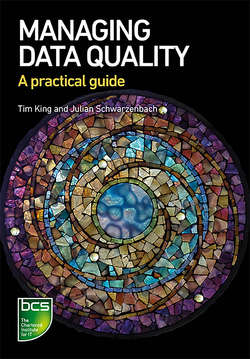Читать книгу Managing Data Quality - Tim King - Страница 26
На сайте Литреса книга снята с продажи.
ОглавлениеManaging Data Quality
10
Review and approve: Before a document can be published, it will typically need to undergo a review and approval process in order to confirm that it meets the required quality to allow it to be published.
Store: As with structured data, large volumes of documents will need to be stored with appropriate security settings ready for use by staff across the organisation.
Publish and distribute: In order for documents to deliver value to your organisation, they must be available and accessible to the relevant people. There will also probably need to be some way to notify staff of the availability of key documents.
Update: At some point in the life of a document there will be a need to update it, perhaps to reflect changes in organisational structure, new processes and so on. This will entail someone creating a new revision (version) of the document and then submitting it for review and approval.
Supersede: Once the new revision (version) of a document has been approved, then the old (previous) version will need to be marked as ‘not current’ or ‘superseded’. Suitable processes will need to be in place to ensure that any hard copy versions of documents are disposed of and replaced with the current version.
Retire: At some point, superseded versions of documents need to be retired so that they are still retained for evidential purposes, but not visible to general users. This is similar to the archive stage for general data.
Dispose: This can involve deletion for electronic documents and a suitable destruction method for hard copies. If the document is sensitive (for security, commercial or intellectual property reasons), then shredding or secure disposal will be required for hard copies.
Within your organisation there could be variations in the life cycles that have been defined here and the names of the different stages. They will, however, probably be broadly similar to the life cycles detailed above.
Figure 1.3 A typical life cycle for documents
Semi-structured data (such as documents and social media feeds) present some additional challenges from a data quality perspective. These data entities will include metadata that provides clarity on items, such as title, date created, the user ID of the creator, version number and so on. They will also include data that have no predictable pattern to the structure. The ‘body’ of a document or message,
